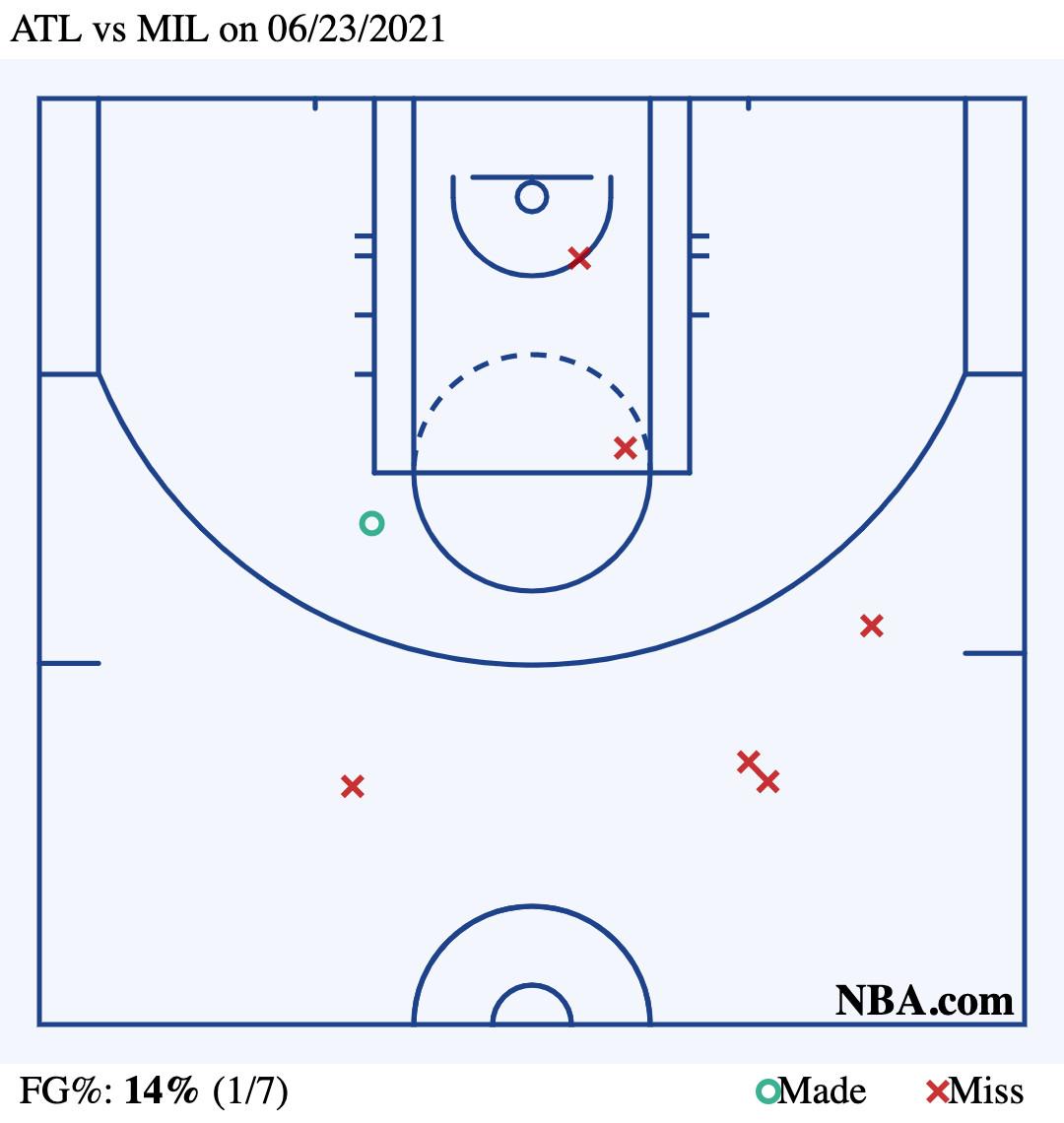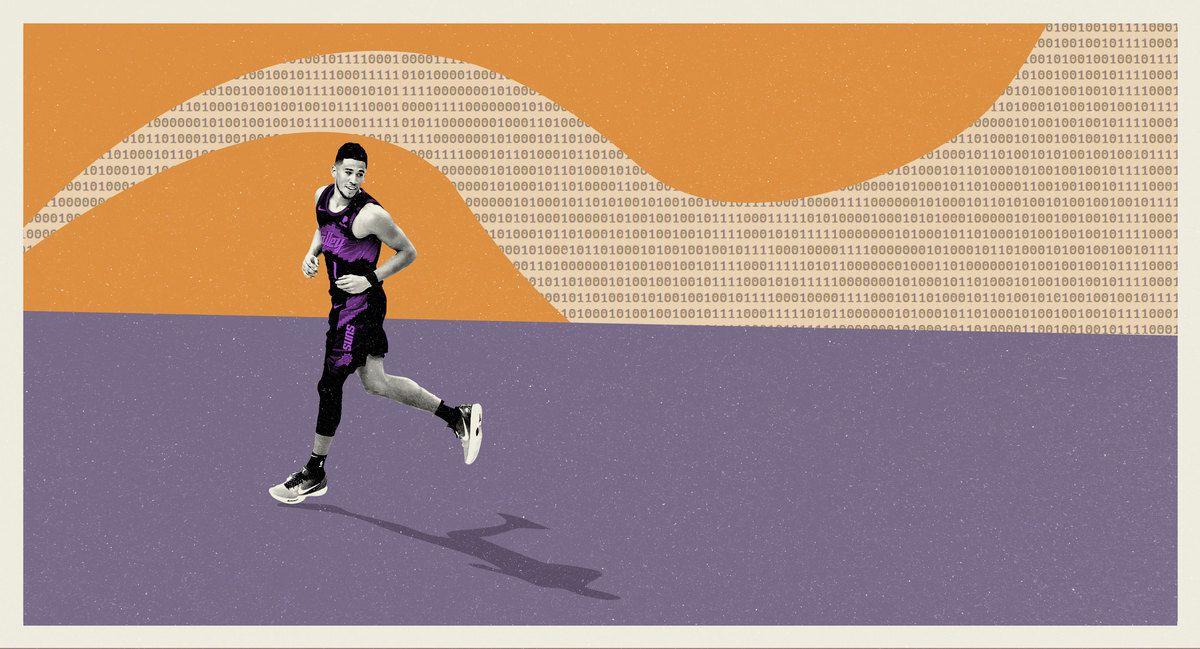It took Trae Young only three quarters to make the Milwaukee Bucks blink.
That might not rate among the most obvious takeaways from Young’s performance in Game 1 of the Eastern Conference finals: a 48-point, 11-assist masterpiece that led Atlanta to its third win in a road opener in this postseason. The initial conclusion is that Young is an absolute superstar, now just three wins away from the Finals at all of 22 years old and gaining new devotees with every swashbuckling game.
The second impression is that Young lives for the spotlight, adding to his bow against the Knicks with a Dunk Contest–worthy alley-oop off the glass and an exaggerated shoulder shimmy before a wide-open 3.
But the most important strategic consideration from Game 1, a 116-113 Hawks win, is that Young was so quick to carve up the Bucks’ base defense, so dynamic through three quarters of play, that he forced Mike Budenholzer, Milwaukee’s famously stubborn coach, to make the first adjustment of the series and switch his rotation for the fourth.
Heading into this series, a surprise pairing of the no. 3 and no. 5 seeds in the East, the key matchup appeared to be Young’s offense versus the Bucks’ defense, a perfect complement of player and opponent. Despite his reputation for 3-point barrages, Young really likes to shoot from the in-between areas; as writer Owen Phillips has documented, the Atlanta guard takes a much larger selection of shots in the short midrange, between the restricted area and the free throw line, than the league as a whole.
That so happens to be the exact area toward which the Bucks attempt to funnel their opponents, as even the best midrange attempts tend to be lower-value looks than layups and 3s. (That’s not always the case, however, as Kevin Durant can attest from the second round.) Young led the league by attempting four floaters per game this regular season, converting at a 46 percent clip, but the Bucks would live with that math; a 46 percent 2-pointer is not an efficient shot.
So Milwaukee entered Game 1 with its typical drop coverage strategy, employed primarily by Brook Lopez. The Bucks ceded floaters to Young while attempting to shut down all the other Atlanta options, the same strategy that Portland tried against Nikola Jokic in the first round, and that the Spurs famously attempted against Steve Nash in the mid-aughts.
But that strategy is predicated on shutting down the star’s teammates, and Young’s fellows did just enough to help him out in Game 1, even as Bogdan Bogdanovic (four points on 1-for-6 shooting) struggled through a lingering knee injury and the bench was quiet. The frontcourt duo of John Collins and Clint Capela was particularly effective: Collins scored 23 points and grabbed 15 rebounds, while Capela tallied 12 points and 19 boards.
With those teammates raining buckets, and with Young pushing his point total up to 37 through three quarters, the Bucks changed tactics for the fourth. Earlier, Budenholzer had expanded the rotation he used in the final tense, must-win games of the last round. In games 5 through 7 against Brooklyn, neither Jeff Teague nor Bobby Portis played at all. In Game 1 against Atlanta, they combined for 21 minutes—though none in the fourth quarter, as Budenholzer, to his credit, quickly realized both backups, Teague in particular, were walking targets for Young’s legerdemain.
In the fourth quarter, Budenholzer tightened the rotation and played mostly with a five-man group that could switch all picks at all positions. The Bucks’ fourth-quarter minutes distribution suggests a clear direction going forward, as the team’s centers played a combined 12 seconds in the final frame with Giannis Antetokounmpo stepping in as the lone big man:
Bucks in the Fourth Quarter in Game 1
Even in a loss, and even in allowing Young to score 48 points, the Bucks have to feel like they found a defensive solution—for now—toward the end of the game. Young shot 4-for-4 from the short midrange in the first half, according to NBA.com, versus just 1-for-7 in the second half. And in the fourth quarter, with the Bucks switching picks and no big man on the floor, Young scarcely ventured inside the arc. Giannis’s length is a fearsome deterrent.
Milwaukee would be thrilled with a repeat of Young’s fourth-quarter shot chart—lots of deep 3s and almost no shots stemming from penetration.

A no-center strategy isn’t a complete panacea, however. Notably, it sacrifices some presence on the defensive glass, a rarity for the Bucks, who have been one of the league’s best defensive rebounding teams throughout Budenholzer’s tenure. When the Hawks trailed 111-107 in the final two minutes, they took the lead with a Collins 3-pointer (after two offensive rebounds) and a Capela putback (after another offensive board).
Capela led the league in offensive rebounds this season, with 4.7 per game, and can certainly make the Bucks pay for playing without a true center—especially if Giannis is up on the perimeter checking Young.
Such is the trade-off for every strategic decision in the playoffs, when a long series forces moves and countermoves and counter-countermoves. No option is perfect: The Hawks might be ready with counters to Giannis switches in Game 2, or Young might miss just enough of his floaters to tilt the math back toward a drop defense, or one team might just go bonkers from distance and render all adjustments moot for a night.
That wasn’t the case on Wednesday, when neither team could find any sort of rhythm on 3-pointers. Atlanta shot 8-for-32 and Milwaukee 8-for-36, with Khris Middleton’s 0-for-9 showing a particular lowlight. The Bucks shot 39 percent on 3s in the regular season, a top-five mark, but they’re down to 30 percent in the postseason. Defensive minutiae be darned, they won’t win the title unless that figure improves.
They’re also not going to win the title unless they can keep Young from dancing all over their home court again, and nobody’s been able to stop him yet this postseason: not the Knicks, not the top-seeded 76ers, and not the Bucks in Game 1. This series has a long way to go, with plenty of further adjustments to come. But Young made the Bucks strike first, and the Hawks won anyway. The Eastern Conference finals, per The Ringer’s NBA Odds Machine, are a toss-up heading into Game 2.

